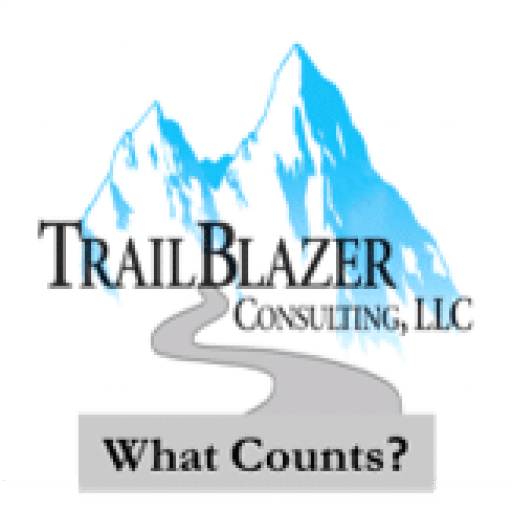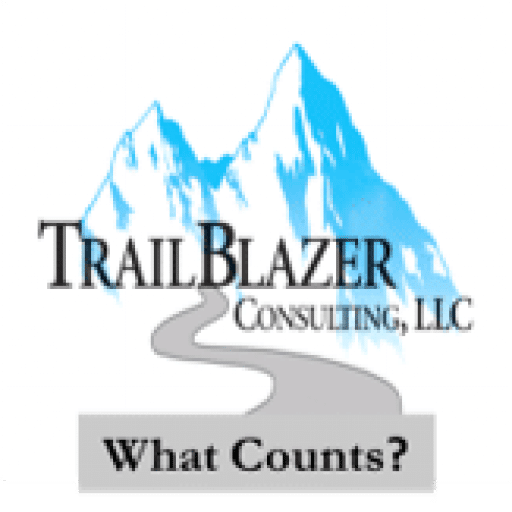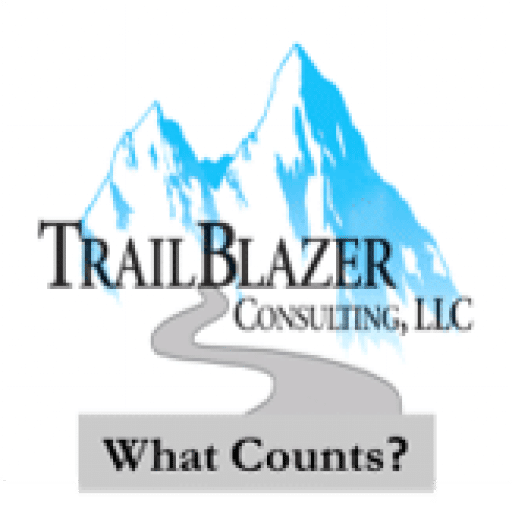Episode Transcript
[00:00:01] Speaker A: How to test for and measure organizational readiness.
Hello. Thank you for joining us. This is what counts. A podcast created by Trailblazer Consulting. Here we highlight proven solutions developed through our experience working with companies across various industries. And we talk about how you can apply these solutions to your company. We share our experience solving information management challenges like creating and implementing your records retention schedule, creating an asset data hierarchy, or helping with email management.
This is Lee, and in this episode, Maura and I will discuss how to test for and measure organizational readiness.
Take us away, Maura.
[00:00:41] Speaker B: I will try. So, in an earlier episode, we had a discussion about people, process, and technology. And somewhere in the course of that discussion, you said, when we're talking about organizational readiness, we need to look at each one of those differently. And I think that's a really good way to start this discussion, because at the end of the day, we need all three of them to be ready. People, process, and technology. Your whole organization needs to be ready. But how you measure it and how you get there are different for each of these areas. Okay, so let's start with people. People, in some ways, are the easiest to measure, maybe the hardest to mitigate, but we're going to talk about mitigation later. So, measuring. We have found surveys to be really helpful, asking people if they understand, kind of understand what change is coming, what are they looking for in this change? What do they think is not working in the current state? So if you take, for instance, a contract management solution, and we're working with a company that has several, and that is not unusual, this is at least the second time, maybe the third time that we've come into an organization and they've had two or more existing contract management solutions, as well as sort of the informal, somebody's just managing contracts in a spreadsheet and on a share drive approach.
Working with this organization, they have several legacy contract management systems. They do a lot of work manually. They call people, they send emails, they pass data back and forth. It's another situation where we have found that they're storing the same data in multiple locations across the company because different groups are storing it at different times in the process.
And they all kind of want a new system.
But when we started digging into what did they want out of the system? Slightly different ideas. When we went through the RFP process to try to pick a new system, it took a long time to get to agreement because there were groups that were like, I just needed to do this thing, and I don't care about anything else. And so if we showed them a system that did other things, they would just rate it zero because they didn't want to see those things. It took a while to get through that. So when you're talking about the organizational readiness from a people perspective, there's understanding and agreeing on what are we trying to change? There's got to be an agreement on the current state needs fixing or needs improvement, because otherwise people just want to hang on to what they know. It's easier to keep doing what you know. So that's the second piece, is the acceptance that it needs to change. It's like, do they fully understand what's going to happen and are they ready to take on the work to do it? And one of the other things we see a lot is that you can get to a point where everybody's like, yeah, this sounds like a great idea, let's do that.
And then when you start doing the hard work, you get another wave of resistance, like, whoa, I know I said change, but I didn't mean change that thing.
I would expect that we're testing and measuring readiness with the people side of this multiple times. In a project, you do it at the beginning. And if you have a wide enough gap in what they want and what they think needs to happen, you might not do the project yet. And with this organization that we're working with now, they actually had two previous starts on replacing their contract management solution separately in different parts of the organization. And they kept getting stopped because the sort of investment review people, the IT and business leadership, and everybody was like, yeah, if we're going to do this, we're going to bring it together in one. And they couldn't get themselves together. They couldn't agree on what needed to happen. So it took about three years to get to agreement, and then it took six months to pick something. And now we're still in the implementation step, and now we're hitting another wave of resistance because we're getting to the second piece of our triad here, which is process and starting to think about how's the process going to change? And remember, these are people used to doing things in a very manual way, which means you have a lot of control over your day to day because it's your email, your copy of the thing, and you put it where you want it, you know where it is. Now, at the organizational level, that is chaos. But at the individual level, it feels like you've got control. And when you start moving into a system and you change to a process, that's an end to end process that involves more parts of the organization.
You as an individual, you feel like you're losing control, and you have to trust that you're all going to come together and it's going to work. And organizationally, you can look down and say, yes, this end to end process is definitely going to be better, but we're hitting a resistance of willingness and acceptance that it's going to be better and understanding how these pieces are going to come and fit together. So we're continuing to measure here to measure the readiness from a process perspective, taking the people out of it, you look for redundancy. How many times did you send the same data? How many places did it get stored? Those are pretty straightforward facts. So if we're just measuring readiness on the process level and build the new process, we can see that pretty well. The processes are not ready. When we build the new processes, we'll be ready on a process part, but it's hard to separate the people from the process because the people have to be willing to do it.
Then we've got the technology piece. And I got a couple of different thoughts on this one.
First, the new technology that you're picking, how does it fit into your it infrastructure, your it footprint? So is it the same kind of thing? So if you're a Microsoft shop, is this a Google piece of software? Does it work together? If you are a totally on premises organization, but this is a cloud hosted software as a subscription new thing, how's that fit? How does it work in your security environment? So it is going to weigh in heavily on that it readiness, that infrastructure readiness to take on this new piece of technology.
But the other piece that I want to put into that technology world is data. Because one of the things that's happening now as we bring in more and more sophisticated technology is that the expectation of being able to share data across systems is much higher. And you've heard us talk a couple of times. We've talked about master data management and the need to connect disparate sets of data that reflect the same part of your business. How do you make them work together when you've got different ids and different fields and different names for the same thing? And that's an issue in a project that's introducing new technology, because there's probably some reference data that is managed somewhere else and it needs to come into your new system, and it needs to make sense. And so that needs study. And from an organizational readiness perspective, that's something to look at before you dive right into the technology.
So those are my three thought, three buckets of how do we measure organizational readiness? Do a survey to talk to the people, look at process for redundancy and duplication and efficiency, and then look at technology from a fit perspective in the infrastructure, from a security perspective, and from a data master data view perspective.
[00:08:46] Speaker A: So I have something to add that I need you to help me out with. Because when I think about the practicality of some new automation coming to a company, it's usually process problems that bring on the thought that we need a new piece, we need some automation.
So then you get your group together and you get your champions, you get your working group, and you get the organization kind of behind what you need to do, which includes your IT department. So it does their assessment of what kind of technology can fit in this environment from all of those items that you talked about, privacy, security, so forth and so on. And now you may have that survey go out because people, once you have your working group together, right, the word starts spreading that this is coming, this new piece of automation is coming. And so people get excited and say, I want it. So even before you get a survey out, let's put it that way, they say, our organization is ready, we want it. We're ready to do this.
In a sense, it might be process technology, people, in terms of the order of things, but the important piece is that you work through each one of them items.
[00:10:14] Speaker B: I agree, and it's a good point. You could often start with a process change. Sometimes you get a change that's driven by it because there's a security concern. And sometimes you get a change driven by people because you can't find the skill set anymore, or you've had a riff for a reduction in force, you've had some other change in your personnel. We in the past have had the one guy who knew how to do IBM as 400 programming, and, man, that guy was in demand.
And he was younger than most people who do EDas 400, which always came up every time that a client asked if we could do this, and we said yes, and then our guy would show up and they would be like, really? This guy? He just liked old stuff and he could figure it out. But that lack of skill drives people to get away from old technology.
So I think that you're right. We can do these in any order. What I think is important is whichever place you start, make sure you go to the other two, because if you don't, you're going to miss something.
[00:11:22] Speaker A: Yeah, that's a great point.
Okay.
Are we good with that?
[00:11:27] Speaker B: I think that's good for how to measure it. I think the next conversation, and we'll do it in the next episode, is okay, we measured it. Now what do we do with this information?
[00:11:40] Speaker A: If you have any questions, please send us an email at info at trailblazer us.com or look us up on the web at www. Trailblazer us. Thank you for listening and please tune to our next episode. Also, if you like this episode, please be a champion. Share it with people in your social media network. As always, we appreciate you the listeners. Special thanks goes to Jason Blake created our music.
[00:12:04] Speaker B: Thank Fleet and Jason and everyone. See you next. Bye.


